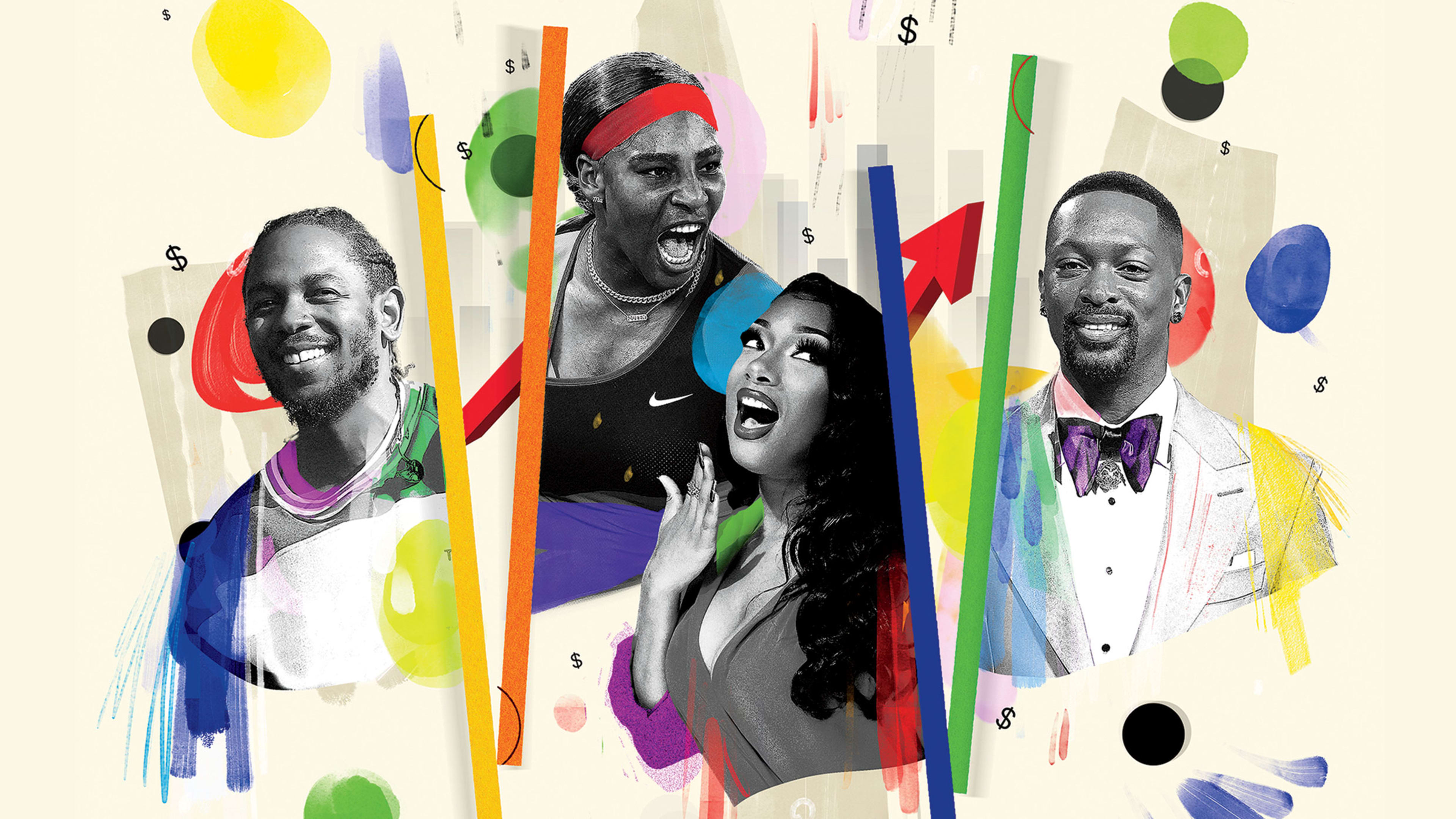Rapper Kendrick Lamar sits between comedian ExavierTV and billionaire investor Ray Dalio. The strange trio is discussing a problem: Exavier lost money in a dice game to a friend, torpedoing his plans to grow his barbershop—a fact we (most of us) know only by way of Lamar’s effortlessly translating Exavier’s slang-heavy rant. Dalio offers a jargon-filled assessment of Exavier’s situation that Lamar distills into something decipherable: Avoid risky dice games and invest in yourself.
The clever scene, made by Lamar’s creative collective, pgLang, was a recent ad from financial service platform Cash App. It’s just one of many savvy campaigns that’s made Cash App, which is owned by Block, an unlikely buzzy brand given that its main function is utilitarian: You send money. You get money. End of transaction.
Cash App has broken through thanks to a series of partnerships with blockbuster talent such as Lamar, Megan Thee Stallion, and Serena Williams. The company selected these individuals to help position the app as a resource for understanding money and making it “universally accessible,” according to Catherine Ferdon, head of brand at Cash App. And they’ve made the app a lot cooler. That most of these campaigns feature prominent Black artists and athletes is no coincidence. Cash App has been leaning into its organic brand awareness among Black users as it broadens its offerings to include bank accounts, debit cards, and stock and Bitcoin trading services. The endgame, says Ferdon, is to weave the platform into users’ lives in unexpected ways.
Cash App’s cultural cachet took root where much of culture emerges: in the Black community. Launched in 2013, the app began gaining traction among Black users, particularly across the South. Its no-fee transactions and features for managing and tracking transactions are a draw for people who have been shut out of traditional financial services. Today, according to Pew Research, 59% of Black Americans say they’ve used Cash App, compared to 51% for PayPal and 45% for Zelle. (Meanwhile, 17% of white Americans say they’ve used Cash App.) Cash App’s average users also tend to skew younger and have lower income. At a 2018 blockchain conference, Block CEO Jack Dorsey noted that Cash App was unintentionally serving as bank accounts to largely unbanked communities, “which wasn’t a stated goal,” he said, “but it’s something we love and want to lean into more.”
Recognize your brand’s excellence by applying to this year’s Brands That Matter Awards before the early-rate deadline, May 3.
